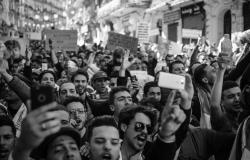
This contribution draws on rhythmanalysis and the political economy of assemblage to provide a framework for understanding the productive spatio‐temporal effects of physical violence on urban rhythms. The paper explores how Buenaventura, Colombia's biggest port city, is transformed both by the growth in container turnover, and through recurring, spatial and temporal practices of violence. What role does violence play in the relation between trade‐driven acceleration through the port, and the aquatic, tidal rhythm that historically shaped the city? The contribution mobilizes the notion of disruption to analyse the frictions emerging between infrastructural nodes of acceleration, inhabitants’ movements, and urban space. I argue that while recurring violence provides urban rhythm itself, social movements may employ the temporal instrument of disruption as a means both of political articulation and transformation within the logics of accelerated accumulation and in a context marked by violent rhythms and forced mobility.
Policy Implication
- Urban violence needs to be addressed both at the city and global levels in order to mitigate the problematic effects of accelerated trade on the urban context. Policy measures need to recognize the linkages between a range of actors that directly and indirectly result in violence.
- Policy measures must be planned with the participation of people experiencing the effects of physical violence.
- Participatory tools which range from participatory budgeting to architecture initiatives 'from below', can strengthen community initiatives and thus help overcome violence. They are preferable to top‐down measures .
- The disruption of trade flows through strikes can illustrate how interwoven logistics workplaces and their surrounding cities are. In urban policy plans for infrastructure hubs, this intertwinement should be taken seriously.
- Integrating an analysis of urban rhythm into urban planning at infrastructure hubs may offer new perspectives on urban movement, the built environment, and the nature of global‐local connections.
Photo by Amine M'Siouri from Pexels